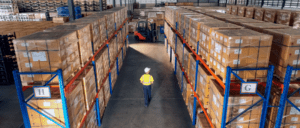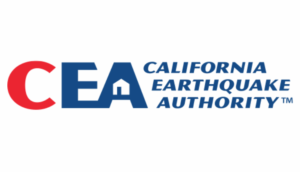Creating a wildfire action plan for your business

Each year, wildfires destroy thousands of acres of land and cause significant damage to properties. In 2021, for example, severe weather caused $2.1 billion in insured catastrophic losses in Canada, according to the Insurance Bureau of Canada (IBC). Of those incidents, two were wildfires — in Lytton and White Rock Lake, B.C. — with a combined insured loss of $179 million.
On average, Canada has about 8,000 wildfires a year, burning 2.5 million hectares, according to the Canadian Red Cross. Most occur between April and September, and they can occur almost anywhere in the country — particularly in Canada’s forests and grasslands.
A federal climate change report predicts that extreme heat will become more frequent and intense, which “will increase the severity of heatwaves, and contribute to increased
drought and wildfire risks.” This has led to drier conditions in Canada’s forests and grasslands, as well as an increased incidence of summer lightning which is a cause of wildfires.
Here are some tips on how businesses can prepare for wildfires and ensure that any damage they sustain is minimal.
The impact on businesses
A building can sustain significant damage from a wildfire even if it’s not directly in the line of fire. While radiant heat from a fire that’s physically close to a building can cause a fire, most wildfire damage is caused by burning embers carried by winds — sometimes over one kilometre or even further. This risk is heightened if flammable material is near the property, such as dry plant matter.
While fire damage is a primary concern, there are also potential complications with evacuation and shutdown orders, as well as the possible interruption of business due to lack of access and damage to critical infrastructure such as power lines. And business owners may have to contend with lost income if their business is shut down while rebuilding after a fire.
Create an action plan
While wildfires can spread quickly and wreak havoc along the way, having a wildfire action plan for your business can significantly improve the chances that your property will survive a wildfire.
The business owner, manager, or supervisor should create a written wildfire response plan and make it accessible to all employees. This should include multiple evacuation routes, a designated meeting area, a communication plan, and emergency contact information. Practice drills should be conducted to ensure staff members know how to respond in the event of a wildfire and are familiar with evacuation routes.
Prep for wildfire season
As spring approaches, it’s important to prep for wildfire season, which includes creating a safety zone or fuel reduction area on your property.
“You may have a large lot, but perhaps you have combustibles in the yard, such as a wooden fence or yard storage, that could create a fire connection between your property and a nearby grove of woods,” says Jason Tcheng, Risk Services Specialist at Northbridge Insurance.
Create a safety zone: According to National Fire Protection Association (NFPA) standards, you should maintain at minimum a 10-metre separation between buildings (as well as vehicles, fuel tanks, and outside storage areas) and high grass or wooded areas. If trees in this area are primarily coniferous (such as pine and fir), this zone should be expanded to at least 30 metres.
Clear debris: Routinely clear deadfall and trimmings from open spaces and away from all buildings, particularly if those buildings are on a slope. Trim trees so there are no branches near the ground, and keep roofs and eavestroughs free of leaves, branches, pine needles, and other debris that could fuel a fire.
Store combustibles: Store combustible and flammable materials in approved containers at an acceptable distance from buildings, fences, and vehicles. Consult your local authorities for specific laws and requirements.
“Some of this may seem like common sense, but if you’re a business owner, you’re focused on running your business, not fire prevention,” says Tcheng. “But it’s important to think about these things: What is our local climate like? Is my facility close to a wooded area? Is there a lot of plant debris on or near my business?”
During a wildfire event
Stay tuned for alerts in your area. Alert Ready is Canada’s emergency alerting system, which delivers critical alerts through wireless devices. The Canadian Wildland Fire Information System (CWFIS) website offers up-to-date reports on the fire situation across Canada, and the Canadian Interagency Forest Fire Centre (CIFFC) website provides detailed fire information, situation reports, and interactive maps of active fires.
If a wildfire is burning in your region, tune into local news stations for evacuation notices and other directions from local authorities. Keep windows and doors closed and shut down building air intakes to limit exposure to smoke and dust. Turn off air conditioning, electricity, and gas services, as well as backup generators. Time permitting, cover vents, windows, and other openings with duct tape and plywood, and use a sprinkler to soak the roof and property (unless local authorities have restricted water use).
After a wildfire event: Build back better
If you’re restoring or rebuilding after a fire (or planning to build a new property), it’s a good time to think about incorporating fire-resistant elements into your building design.
“If your roof is up for replacement, consider fire-resistant materials right from the get-go,” says Tcheng. “If you’re building or expanding a facility, consider materials that are going to be non-combustible, such as metal instead of wood frames, keeping in mind that space separation is going to be very important.”
Choose fire-resistant roofing and siding, such as metal, slate, or fiber-cement (look for a Class A rating). Also consider brick or stucco walls, which typically meet or even exceed one-hour fire ratings, depending on thickness.
Easy, cost-effective upgrades include covering roof vents with fire- and corrosion-resistant screens, installing spark arrestors on chimneys and vents, and installing doors and windows with at least a 20-minute fire-resistance rating.
For a larger facility with a lot of combustible materials, such as a sawmill or lumber yard, it might make sense to install exterior sprinkler protection. “But I wouldn’t stake my entire preparedness plan on sprinklers and keeping everything wet,” says Tcheng. “There could be a local watering restriction, especially in areas with a dry climate, so taking a more holistic approach to wildfire preparedness is preferable.”
Catastrophic weather events, including wildfires, are expected to increase over the coming years, thanks to climate change. But having a wildfire plan for your business can go a long way in helping to mitigate damage — so you can get back to business.
Ensure you’re covered
Having an action plan in place is vital and having the appropriate insurance coverage plays a part in that plan. That way, should something go wrong despite your best efforts, you can rest easy knowing there’s a policy in place to help protect your business. Visit our business insurance page today to learn more!






